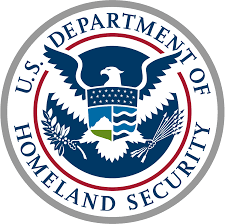 On Monday the FBI and Department of Homeland Security (DHS) issued an alert for SamSam ransomware also known as MSIL/Samas.A. Hackers armed with SamSam targeted multiple industries, including some within critical infrastructure predominantly withing the United States.
On Monday the FBI and Department of Homeland Security (DHS) issued an alert for SamSam ransomware also known as MSIL/Samas.A. Hackers armed with SamSam targeted multiple industries, including some within critical infrastructure predominantly withing the United States.
How SamSam Ransomware Attacks Happen
- The actors exploit Windows servers to gain persistent access to a victim’s network and infect all reachable hosts.
- Cyber actors used the JexBoss Exploit Kit to access vulnerable JBoss applications.
- Cyber actors use Remote Desktop Protocol (RDP) to gain persistent access to victims’ networks.
- The hackers typically used brute force attacks or stolen login credentials. Detecting RDP intrusions can be challenging because the malware enters through an approved access point.
- After gaining access to a particular network, the SamSam actors escalate privileges for administrator rights, drop malware onto the server, and run an executable file, all without victims’ action or authorization.
FBI analysis of victims’ access logs revealed that the SamSam actors can infect a network within hours of purchasing the credentials. While remediating infected systems, several victims found suspicious activity on their networks unrelated to SamSam. This activity is a possible indicator that the victims’ credentials were stolen, sold on the darknet, and used for other illegal activity. SamSam actors leave ransom notes on encrypted computers. These instructions direct victims to establish contact through a Tor hidden service site. After paying the ransom in Bitcoin and establishing contact, victims usually receive links to download cryptographic keys and tools to decrypt their network.
The DHS and FBI alert outlines 14 steps that cybersecurity professionals should take to mitigate the risk of a SamSam infection.
- Audit your network for systems that use RDP for remote communication. Disable the service if unneeded or install available patches. Users may need to work with their technology venders to confirm that patches will not affect system processes.
- Verify that all cloud-based virtual machine instances with public IPs have no open RDP ports, especially port 3389, unless there is a valid business reason to keep open RDP ports. Place any system with an open RDP port behind a firewall and require users to use a virtual private network (VPN) to access that system.
- Enable strong passwords and account lockout policies to defend against brute force attacks.
- Where possible, apply two-factor authentication.
- Regularly apply system and software updates.
- Maintain a good back-up strategy.
- Enable logging and ensure that logging mechanisms capture RDP logins. Keep logs for a minimum of 90 days and review them regularly to detect intrusion attempts.
- When creating cloud-based virtual machines, adhere to the cloud provider’s best practices for remote access.
- Ensure that third parties that require RDP access follow internal policies on remote access.
- Minimize network exposure for all control system devices. Where possible, disable RDP on critical devices.
- Regulate and limit external-to-internal RDP connections. When external access to internal resources is required, use secure methods such as VPNs. Of course, VPNs are only as secure as the connected devices.
- Restrict users’ ability (permissions) to install and run unwanted software applications.
- Scan for and remove suspicious email attachments; ensure the scanned attachment is its “true file type” (i.e., the extension matches the file header).
- Disable file and printer sharing services. If these services are required, use strong passwords or Active Directory authentication.
You can review the full alert here.
